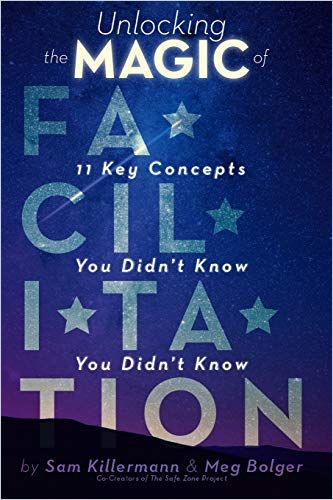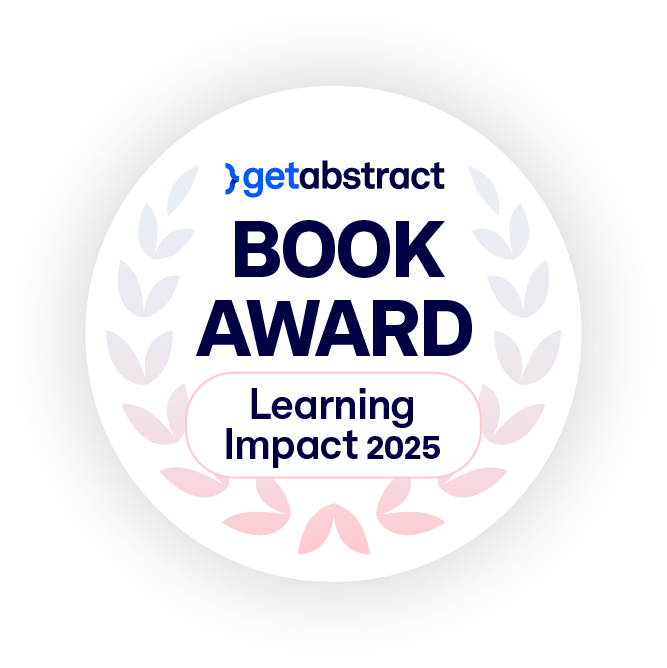Social entrepreneur and facilitator Meg Bolger and social justice facilitator Sam Killermann provide practical, compassionate lessons for facilitators, whether beginners or experts.

Stay Honest
Social entrepreneur and facilitator Meg Bolger and social justice facilitator Sam Killermann offer practical insights for guiding dynamic, inclusive, and productive group experiences.
Learning and Decision-Making
Facilitation is the art of guiding individuals through a process while managing group dynamics, encouraging participation, and ensuring productive outcomes without imposing your values or preferences on the participants.
Facilitation differs from teaching and lecturing, Bolger and Killermann explain. When teaching, learners may offer input and can guide the conversation, but the educator remains central. Facilitation prioritizes active learner engagement and participation.
The greatest sign of success for a teacher is to be able to say, ‘The children are now working as if I did not exist.’ Educator Maria Montessori
By choosing facilitation, an educator relinquishes control over the content and structure of the learning experience. Learners take ownership of their journey.
Bolger and Killermann stress the importance of actively listening. Pay attention to participants’ words, tone, and body language. Resist the urge to fill the silence after asking questions — let participants process and respond. Read participants’ verbal and nonverbal cues to better meet the group’s needs.
“Yes, And”
Use the transitional phrase, “yes, and” to promote inclusivity and deeper understanding. According to Bolger and Killermann, when facilitators respond with “and” instead of “but,” they acknowledge other perspectives without negating them.
Integrate participants’ responses into the conversation, and they will contribute openly, thus fostering a collaborative environment. The facilitator then guides discussions that explore numerous perspectives. Using “yes, and” keeps conversations open and constructive. It helps the facilitator promote exploration, learning, and reflection and remain neutral and focused on greater understanding.
Good questions don’t necessarily have to be answered aloud; sometimes a question itself, without an answer, will prompt introspective learning.Bolger and Killermann
Craft questions that help participants think more deeply, challenge their assumptions, and engage in the learning process. Clarifying questions such as, “What did you mean when you said…?” help ensure clear communication, while probing questions such as, “Can you speak more to that idea?” push participants to explore ideas. Challenging questions, such as, for example, asking if an alternative perspective might be true for some, broaden participants’ viewpoints without shutting down their initial thoughts.
Questions depend on the scenario and your goals, Bolger and Killermann note. Closed-ended questions bring quick, finite responses. Open-ended questions, such as “What are you hoping to gain from this experience?” suit smaller, more intimate discussions. Co-creative questions, which allow the facilitator and participants to build on each other’s answers, encourage collective learning and prove useful when a group seems disengaged or resistant to participating.
Build Trust
Vulnerability enables connection and learning by encouraging participants and facilitators to embrace discomfort and uncertainty. Bolger and Killermann argue that when facilitators admit they don’t have all the answers or share personal stories, they create an environment in which participants feel safe to take similar risks. A facilitator admitting “I don’t know” models vulnerability and shows participants that not knowing is a natural part of learning. This encourages an atmosphere in which growth, not perfection, is the goal.
When facilitators acknowledge they don’t know something, it makes them more relatable and trustworthy and reminds participants that learning is an ongoing journey rather than a fixed state. This nurtures a mindset of shared exploration in which facilitators and participants grow together.
Cultivate a space in which people learn vulnerability by practicing compassionate courage. Show empathy, patience, and a genuine desire to understand their perspectives, even when those perspectives prove challenging or uncomfortable. For example, when a participant shares a problematic or unpopular opinion, the facilitator should approach the idea with curiosity rather than judgment, and ask thoughtful questions that invite further exploration. When facilitators demonstrate compassion and openness, participants feel supported, even when unsure or afraid.
We remember emotions, and emotional experiences anchor memories for us, even while we forget some of the details.Bolger and Killermann
An environment of trust helps facilitators handle emotional triggers, which can arise from sarcastic comments or more intense situations. Feelings of discomfort, defensiveness, or anger generate reactions that derail productive dialogue. Handling these emotional moments requires sensitivity, awareness, and a readiness to engage with the unexpected. When participants feel vulnerable, confused, or overwhelmed, their emotions manifest as shifts in body language, changes in tone of voice, or more obvious emotional displays, such as tears or frustration.
Bolger and Killermann caution facilitators to be aware of their emotional responses to participants’ remarks, too. When emotions begin to run high, it helps to pause to reflect, reframe the situation, and practice nonreactive behaviors, such as deep breathing or asking clarifying questions. Allowing participants to explore complex topics such as identity, vulnerability, or mistakes without feeling judged or dismissed nurtures a deeper, more authentic exchange of ideas and knowledge. Openness reinforces that learning is never complete and that everyone, facilitator included, enjoys a chance to flourish.
Compassionate Advice
Meg Bolger and Sam Killermann’s strategies help new and experienced facilitators guide groups through difficult conversations, encourage open participation, and inspire meaningful change. The authors describe the complex environment of facilitation sessions and steer potential facilitators through the many, varying minefields awaiting them. Though they take the work seriously, Bolger and Killermann never lose their sense of humor and keep their tone conversational. The authors’ compassion for facilitators and participants shines through the text and aids the reader in understanding the emotional complexity of facilitation.














